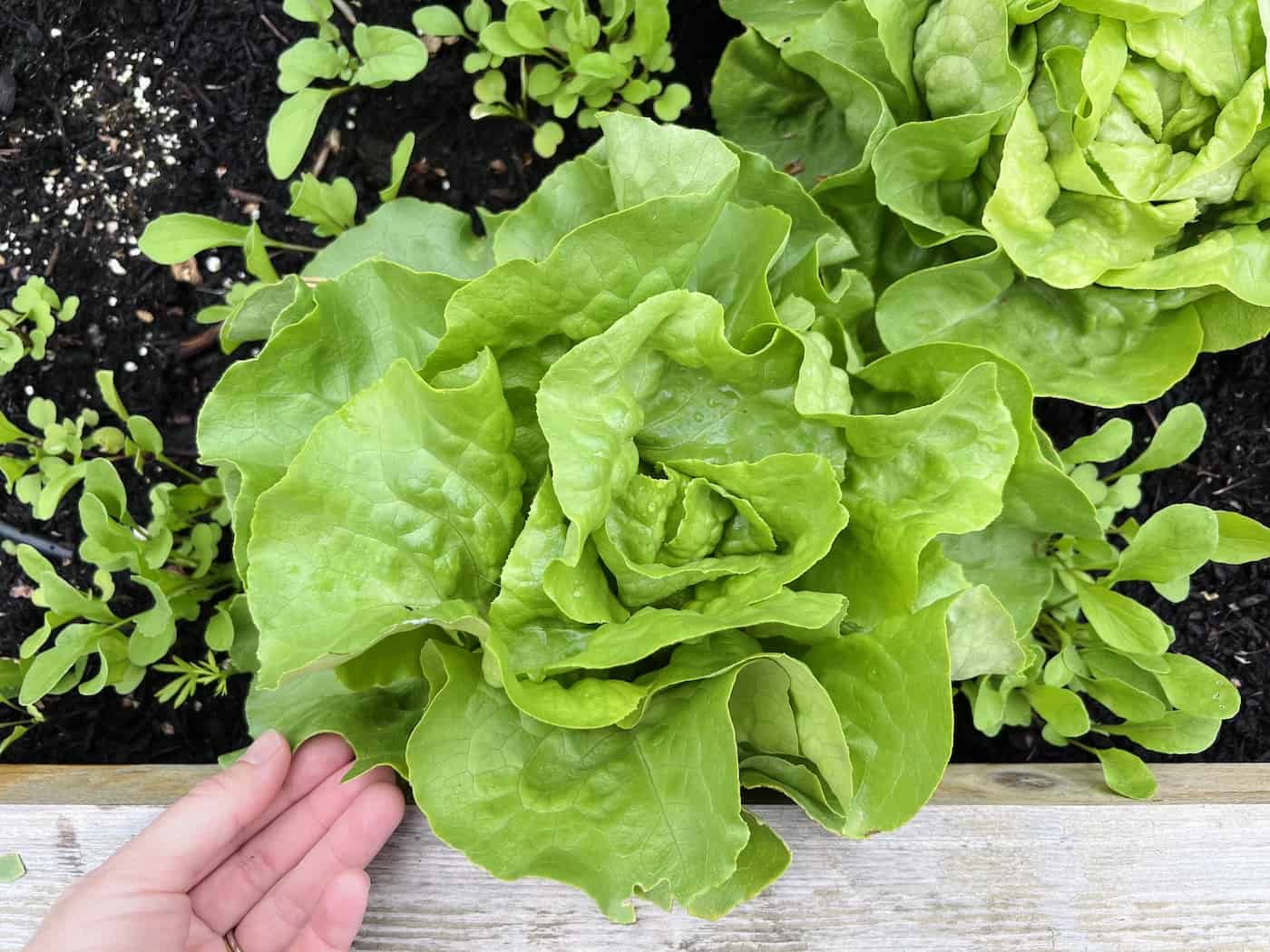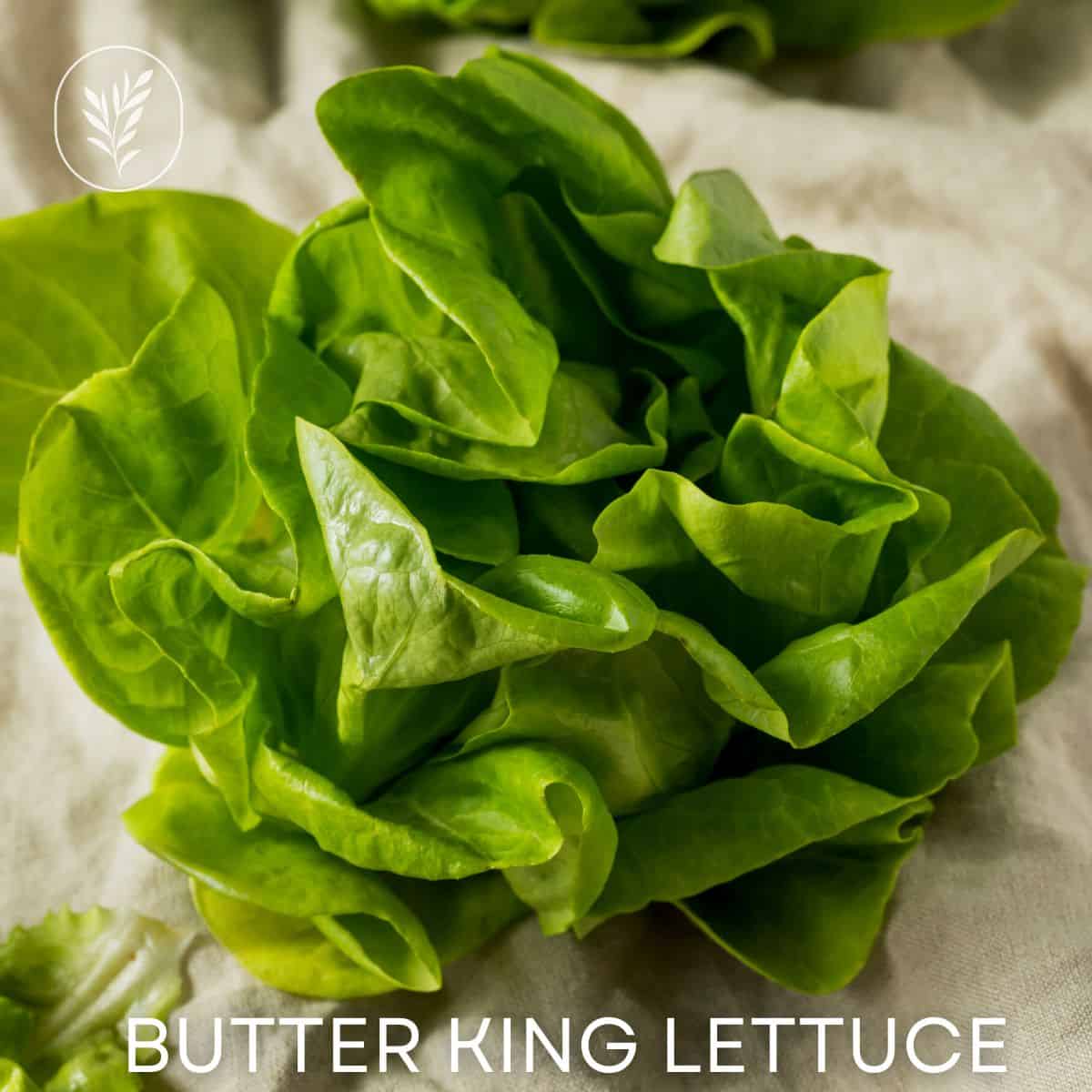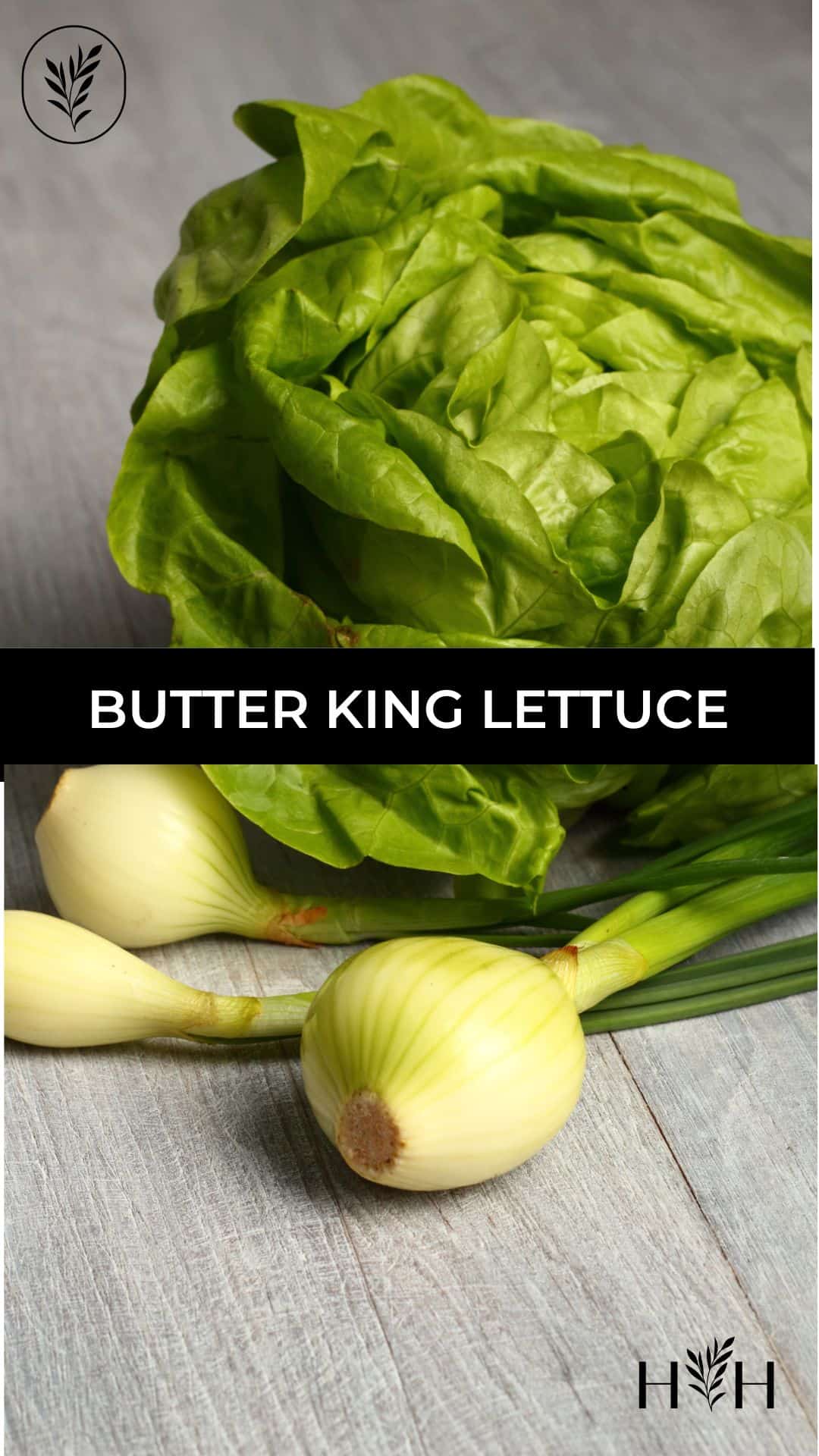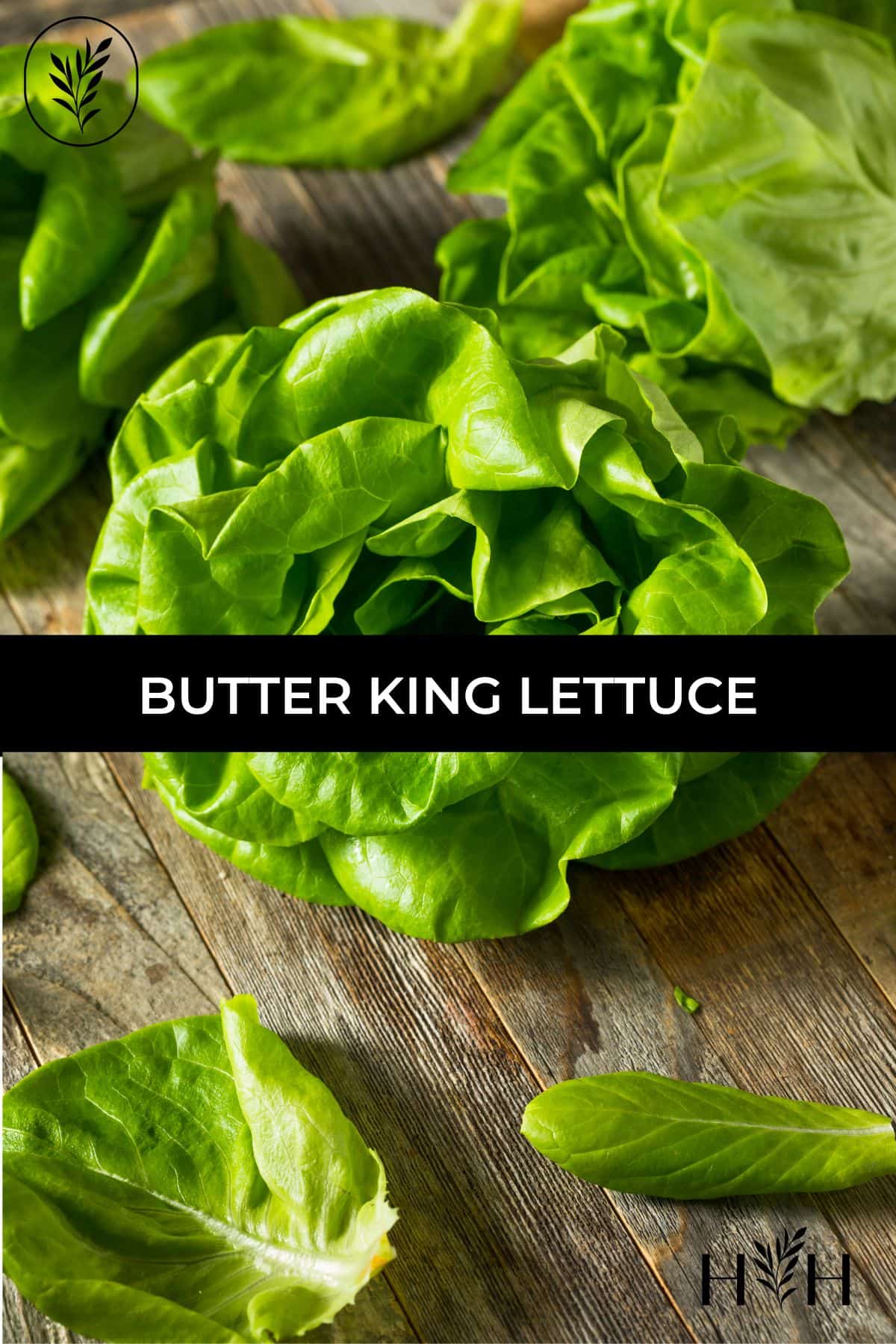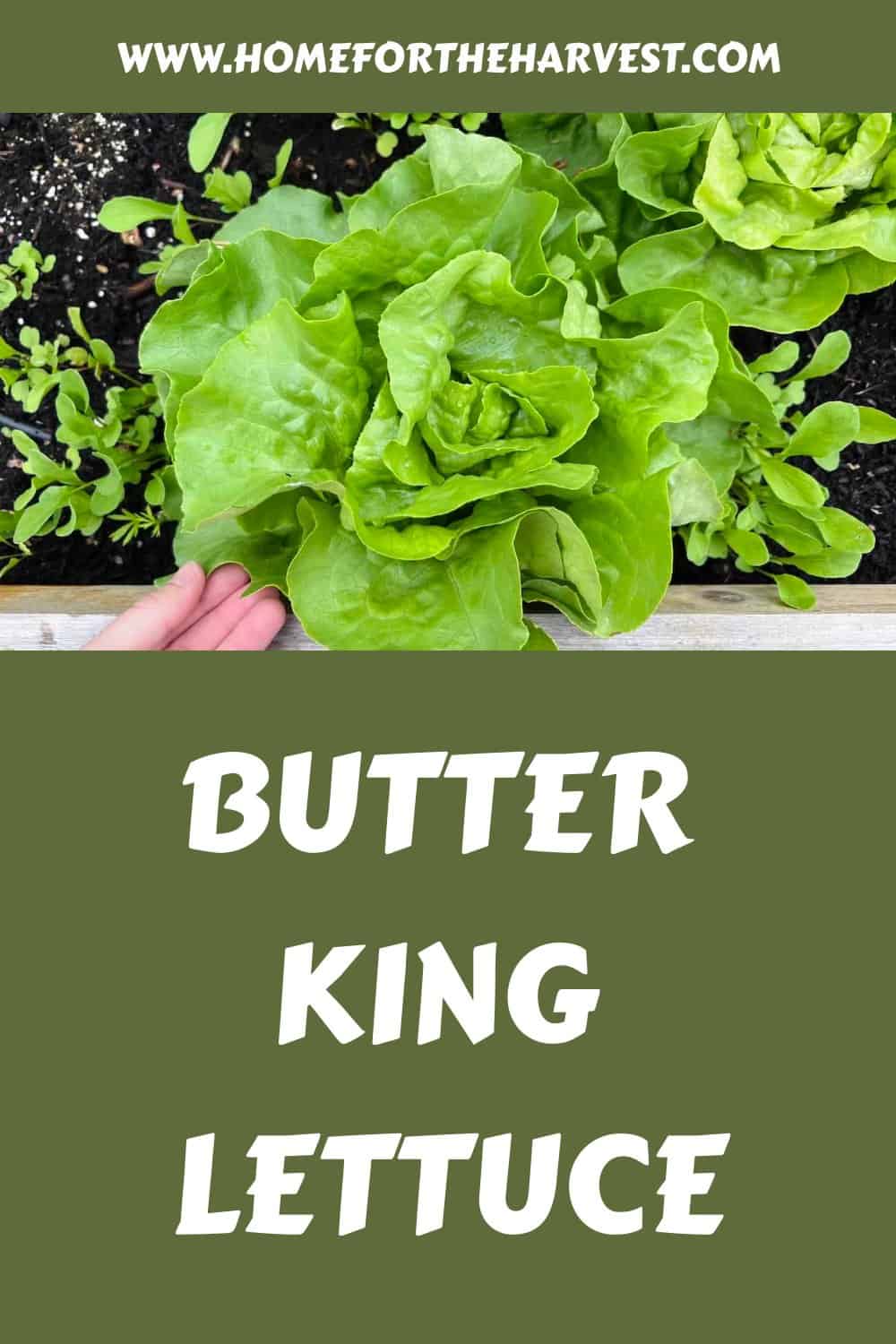Butter King lettuce is a cultivar of butterhead lettuce known for its rounded, succulent, sweet-tasting leaves. This variety can be grown for baby greens but really shines when allowed to develop into a full, folded head. ‘Butter King’ is an award-winning variety that was named an All-America Selections Winner in 1966 due to its exceptional flavor and ease of growing.
Introduction to Butter King lettuce
Butter King Lettuce (Lactuca sativa ‘Butter King’) is a type of butterhead lettuce known for its large, loosely-formed heads with tender, sweet leaves that have a smooth, buttery texture. This heirloom Boston-type variety has light green outer leaves and pale yellow inner leaves. It’s prized for its mild sweet flavor and succulent texture, making it an excellent choice for salads and sandwiches.
Growing Butter King lettuce can be a rewarding experience for both novice and experienced gardeners. This tender, butterhead variety offers your salads and sandwiches a delightful flavor and texture. This comprehensive guide will explore various aspects of cultivating these delicious greens in your home garden.
We’ll begin by discussing soil preparation and the importance of staggering plantings for continuous harvests. Next, we’ll delve into watering and fertilizing requirements to ensure healthy growth. Additionally, you’ll learn valuable tips on seedling care, hardening off processes, transplantation techniques, as well as harvesting considerations such as signs that indicate matured leaves ready for picking.
Furthermore, our discussion on companion planting strategies will help maximize the benefits of growing Butter King lettuce alongside other suitable plants. Lastly, we’ll address common pests and diseases affecting lettuces while providing preventive measures to keep your garden thriving.
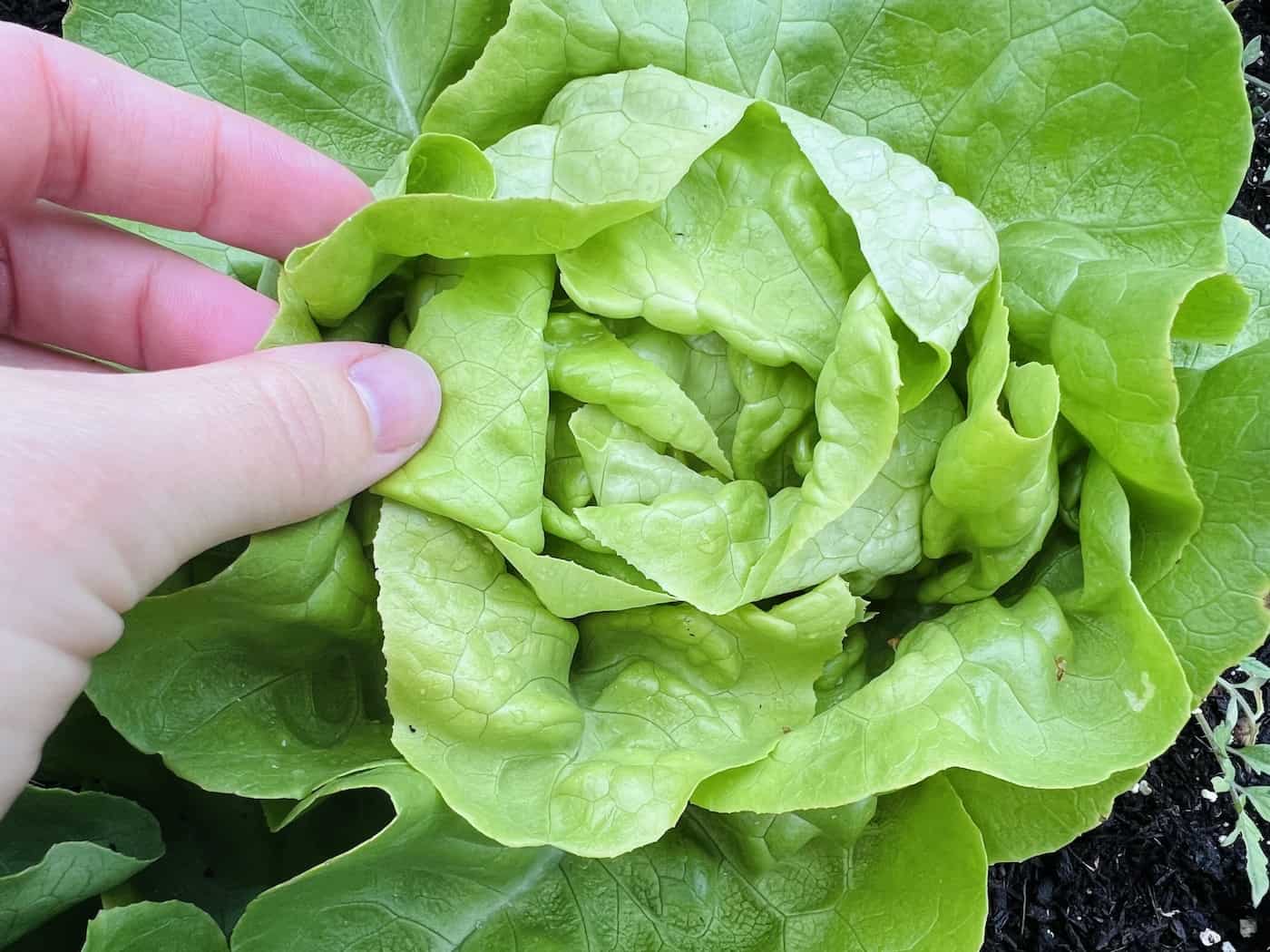
Growing Butter King lettuce
Butter King lettuce is a cool-season crop that grows quickly and can tolerate light frost. It’s best to sow the seeds directly into the garden as soon as the soil can be worked, ensuring optimal growth at temperatures of 60-65°F without using a heat mat for germination.
Soil preparation for planting lettuce
To give your Butter King lettuce a strong start, prepare your garden bed by loosening the soil and incorporating plenty of organic matter like compost or well-aged manure. This will help create a nutrient-rich environment with good drainage, which is essential for healthy lettuce growth. Be sure to test your soil pH if you have the chance, as lettuces prefer slightly acidic soil.
Staggering plantings for continuous harvest
Lettuces grow rapidly, so it’s wise to stagger your plantings every two weeks throughout the growing season to enjoy fresh salads all summer long. By sowing small batches of seeds at regular intervals, you’ll ensure that you always have tender young leaves available without too many older plants beginning bolting or becoming bitter due to warmer weather.
Remember, Butter King lettuce is a cool-season crop and thrives in temperatures between 60-65°F. As the weather warms up, you can extend your harvest by planting new seeds in shadier areas of your garden, which will help keep the soil cooler for these delicate greens.
Watering and fertilizing requirements
To keep your Butter King lettuce thriving, it’s important to maintain consistent moisture levels in the soil. A good guide is to keep the soil moist until the seeds germinate, and then decrease watering to every couple of days, based on climate and rain amounts. If you’re experiencing a dry spell, increase the frequency to every morning if the plants are in a container or raised bed.
Monitoring the top inch of soil can help you determine if additional waterings are needed. Use high humus soil and apply fertilizer three weeks after transplanting seedlings to ensure strong development.
Best types of fertilizers for growing lettuce
- Organic compost: Adding organic compost into the planting area will provide necessary nutrients while improving overall soil structure.
- Fish emulsion: This liquid fertilizer offers an excellent source of nitrogen that promotes lush leafy growth; mix with water according to package instructions before applying.
- Balanced granular fertilizer: Look for a balanced formula (e.g., 10-10-10) which provides equal parts nitrogen, phosphorus, and potassium; sprinkle around plant base as directed on packaging labels.
In addition to these options, consider adding aged manure or worm castings as part of your pre-planting preparations – both offer rich sources of nutrients that contribute significantly towards healthier lettuce growth.
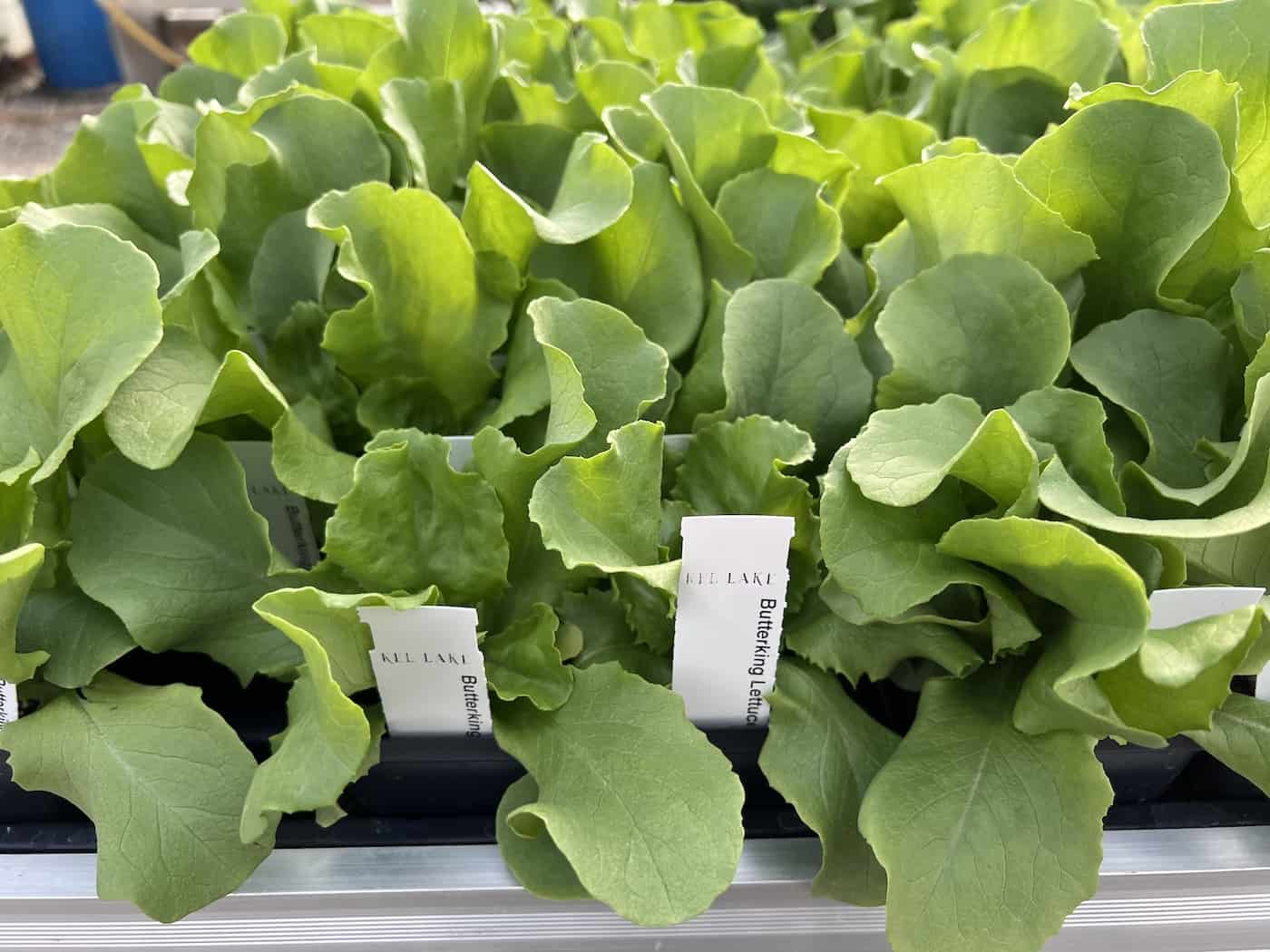
Planting Butter King lettuce
You can plant Butter King lettuce from seeds or purchase seedlings at a local nursery or garden center. The seeds are generally cheaper, but buying seedlings can be faster and easier. If you choose to grow from seed, you can start the seeds indoors or plant them directly into the garden soil outdoors.
Planting lettuce seeds
Lettuce seeds can be planted indoors in seedling trays or a smart garden, or you can just put the seeds straight into your outdoor garden soil. Lettuce seeds germinate most quickly at about room temperature, so you may wish to start your seeds indoors in trays if its still near-freezing outdoors. Seedling plants are also easier to space out when planting outdoor than the tiny lettuce seeds.
Whether your planting your seeds indoors or outside, start with high-quality soil that is free from weeds and other plants. Moisten the soil. Gently place two seeds per growing location. Place a tiny bit of soil overtop of the seeds (about 1/8 of an inch). Mist the planted seeds.
Butter King can be grown for baby greens, but is usually grown to mature size due to the attractive nature of the full-grown heads. Plants are generally spaced about 8 inches apart in rows that are 12 inches apart. You can plant a seed every two inches and thin them out when its clear which ones are strongest, or you can just space them 8 inches apart from the start.
Planting lettuce seedlings
Growing Butter King lettuce successfully starts with proper seedling care before transplanting them outdoors. By hardening off your seedlings, you’ll gradually expose them to outdoor conditions while maintaining a constant water supply in cool, dark locations. This will help ensure their survival and promote healthy growth.
- Begin indoors: Start by growing your Butter King lettuce seedlings indoors under grow lights or near a sunny window for about four weeks before transplanting outside.
- Increase light exposure: Gradually increase the amount of sunlight your seedlings receive each day by moving them closer to the window or adjusting the height of your grow lights.
- Transition outdoors: About one week before transplanting, begin placing your seedlings outside during daytime hours when temperatures are above about 50°F (10°C). Start with just an hour or two per day and gradually increase this time over several days until they spend most of their daylight hours outdoors.
- Avoid harsh conditions: Be sure to bring your seedlings back inside if nighttime temperatures drop below freezing or if there’s any risk of frost. Also, protect them from strong winds and direct midday sun during this acclimation period.
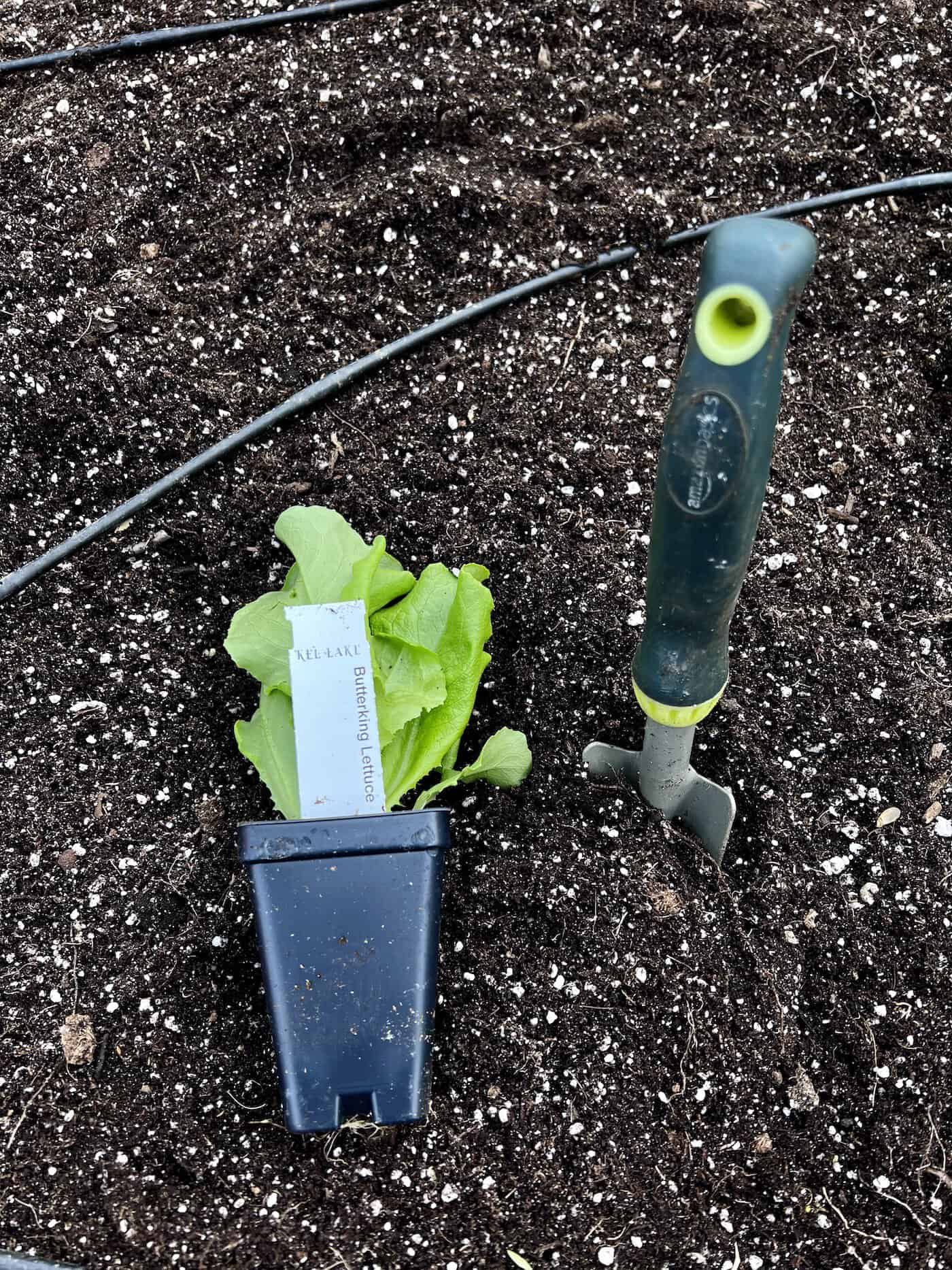
Transplanting Butter King lettuce seedlings into the outdoor garden
- Select an ideal location: Your garden bed should be well-draining soil rich in organic matter, ideally located in a spot that receives morning sun and afternoon shade.
- Space seedlings properly: When transplanting, space your Butter King lettuce plants about 8-12 inches (20-30 cm) apart to allow for ample growth and air circulation.
- Water thoroughly: Water the transplanted seedlings immediately after planting to help them establish their roots. Continue providing consistent moisture as they grow, aiming for at least one inch of water per week through rainfall or supplemental watering.
Taking these steps will ensure your Butter King lettuce seedlings have the best chance of thriving outdoors, leading to a bountiful harvest.
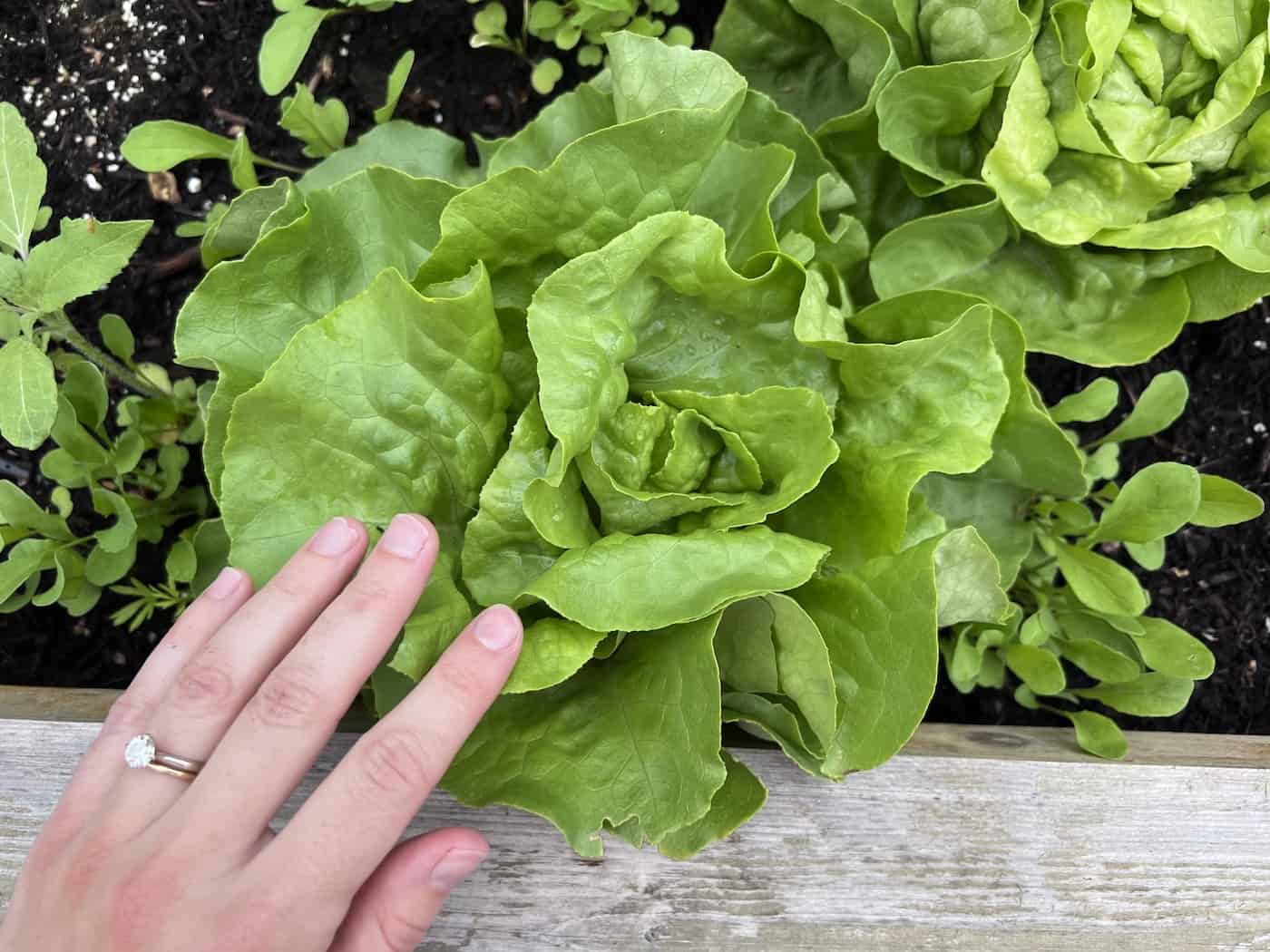
Harvesting lettuce
The ideal time to harvest your Butter King lettuce depends on its maturity stage; pick leaves when they’re young rather than waiting too long so their taste doesn’t become bitter. Harvest heads early in the morning and store them in cool, dark places with high humidity levels lasting up to 2-3 weeks.
Signs that indicate matured leaves ready for picking
To ensure you enjoy the best flavor from your Butter King lettuce, look out for these signs of maturity:
- Leaves have reached their full size and are tender but firm.
- A vibrant green color is present throughout the entire leaf.
- A tight head has formed at the center of the plant.
Picking younger leaves also encourages new growth, allowing you to continue harvesting from your plants throughout the season.
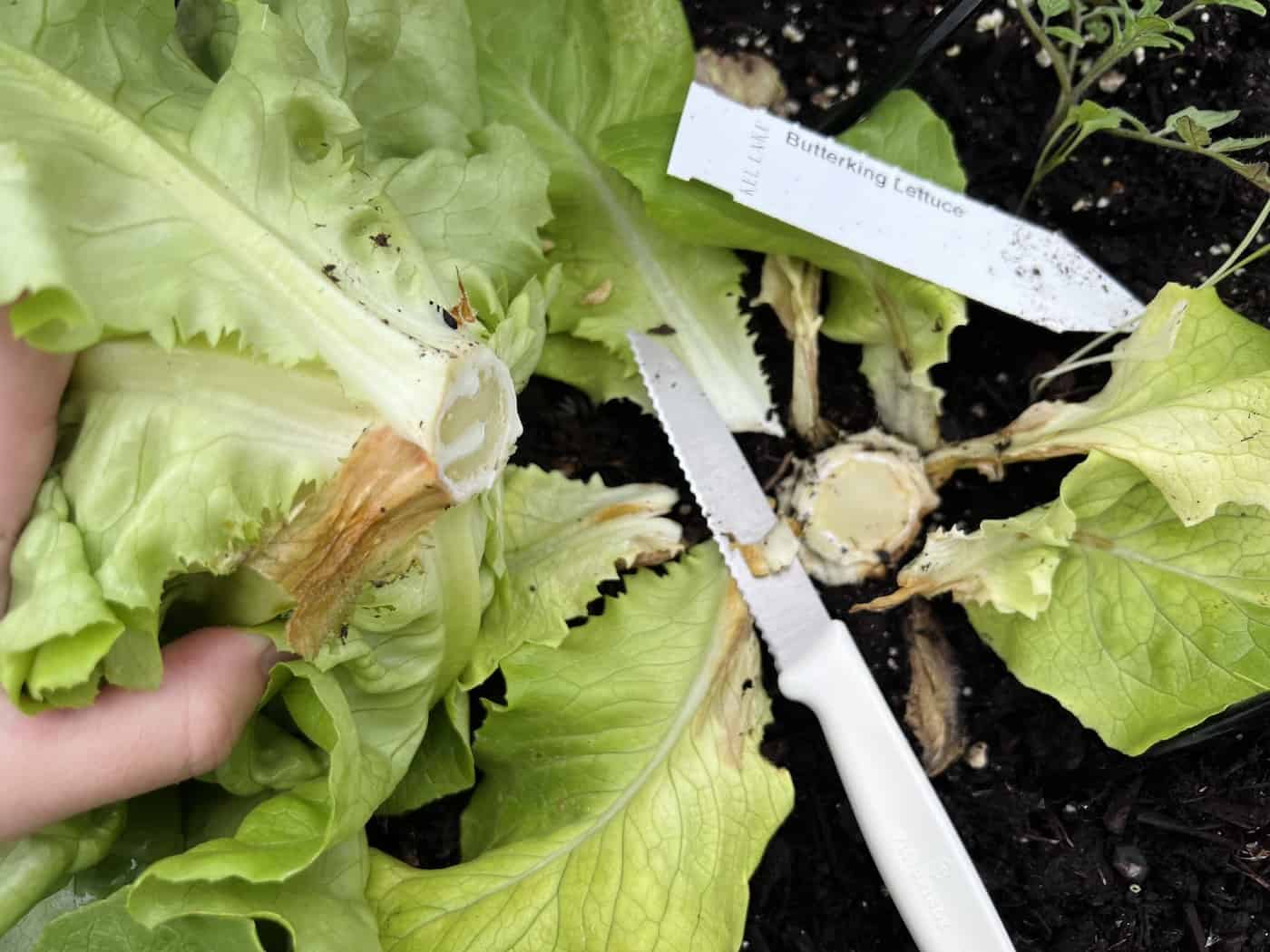
Storage tips post-harvest
To keep your freshly harvested Butter King lettuce crisp and delicious, follow these storage guidelines:
- Rinse off any dirt or debris gently under cold water and pat dry with paper towels or a clean cloth.
- Wrap individual leaves or whole heads loosely in damp paper towels to maintain moisture without causing rotting issues.
- Place wrapped lettuce inside an unsealed plastic bag or airtight container, leaving a small opening for air circulation.
- Store in the crisper drawer of your refrigerator at temperatures between 32-40°F (0-4°C).
Following these steps will help you enjoy fresh and tasty Butter King lettuce for up to 2-3 weeks after harvesting. Happy salad-making.
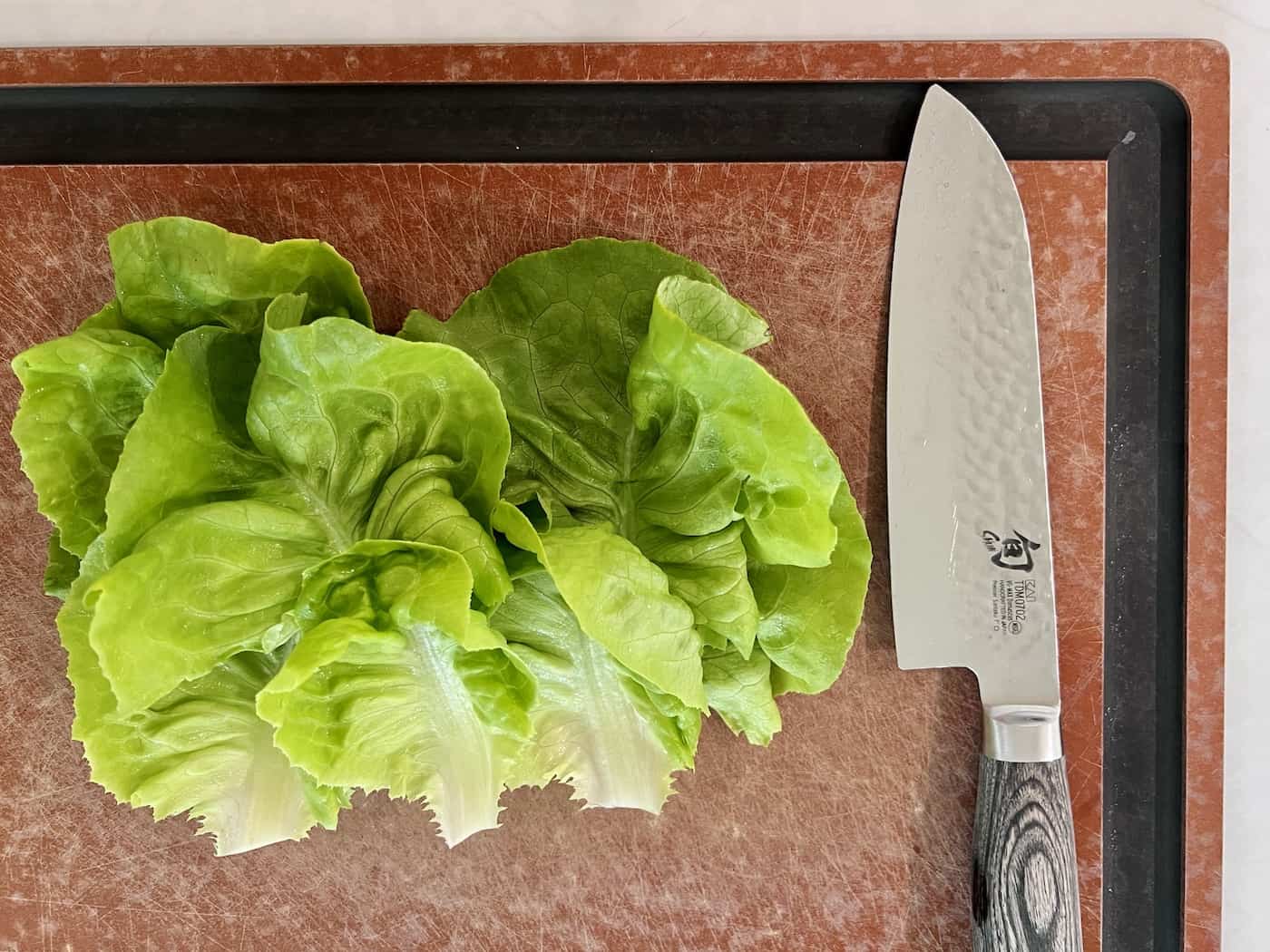
Companion planting strategies
Maximize space utilization by planting taller plants like tomatoes near your Butter King lettuce so their leaves remain shaded during hot parts of the day. This helps maintain cooler temperatures conducive to lettuce growth. This section will explore the benefits of companion planting for Butter King lettuce and other suitable companion plants for growing lettuce.
Benefits of companion planting
Companion planting is a horticultural approach that entails putting various sorts of vegetation near each other to improve their growth. For Butter King lettuce, having taller plants nearby provides shade and keeps the soil cool, which is essential for optimal growth. Some companion plants can also deter pests or attract beneficial insects that keep harmful bugs at bay.
- Tall vegetables: Besides tomatoes, you can also plant peas or beans near your lettuce as they will provide similar shading benefits while adding nitrogen to the soil.
- Aromatic herbs: Herbs such as basil, dill, cilantro, and parsley not only add flavor to your dishes but also repel certain pests that may harm your lettuce crop.
- Nasturtiums: These beautiful flowering plants are known to be an excellent trap crop; they lure aphids away from your precious greens.
- Allium family members: Onions, garlic, chives, or leeks planted around your garden bed create a natural barrier against slugs and snails, which are common lettuce pests.
When planning your garden layout, consider the companion planting chart to ensure you’re placing plants together that will benefit each other. Incorporating companion planting strategies into your gardening routine will create a healthier and more productive environment for your Butter King lettuce to thrive.
Common pests and diseases
Butter King lettuce may be susceptible to pests and diseases like other lettuce varieties. It’s important to monitor your crop regularly to identify potential issues early on and apply organic or chemical treatments as necessary while maintaining a healthy garden environment.
Identifying common pests affecting lettuce plants
Aphids, slugs, snails, and cabbage loopers are some of the most common pests that can affect your Butter King lettuce. Aphids can cause yellowing leaves by sucking plant sap. You can control them using insecticidal soap sprays.
Slugs and snails feed on young seedlings at night. Use barriers such as copper tape or diatomaceous earth around your plants to deter these slimy creatures.
Cabbage loopers are green caterpillars that chew holes in the leaves. You can pick them off manually or apply Bacillus thuringiensis (Bt), a natural bacterium-based pesticide.
Preventive measures against diseases in the garden
Here are some things you can do to minimize disease in your garden:
- Maintain Proper Spacing: Ensure adequate space between plants for good air circulation, which helps prevent fungal infections like downy mildew.
- Cleanliness: Keep your gardening tools clean and sanitized to avoid spreading disease-causing pathogens from one plant to another.
- Rotate Crops: Practice crop rotation to reduce the buildup of soil-borne diseases and pests.
- Water Wisely: Water your lettuce early in the day so leaves have time to dry before nightfall. This helps prevent fungal growth due to excess moisture on foliage.
- Promote Healthy Soil: Enrich your garden with organic matter like compost or well-aged manure, which improves soil structure and encourages beneficial microorganisms that help suppress disease pathogens.
Taking these preventive measures will ensure a thriving Butter King lettuce crop while minimizing damage from common pests and diseases. Happy gardening.
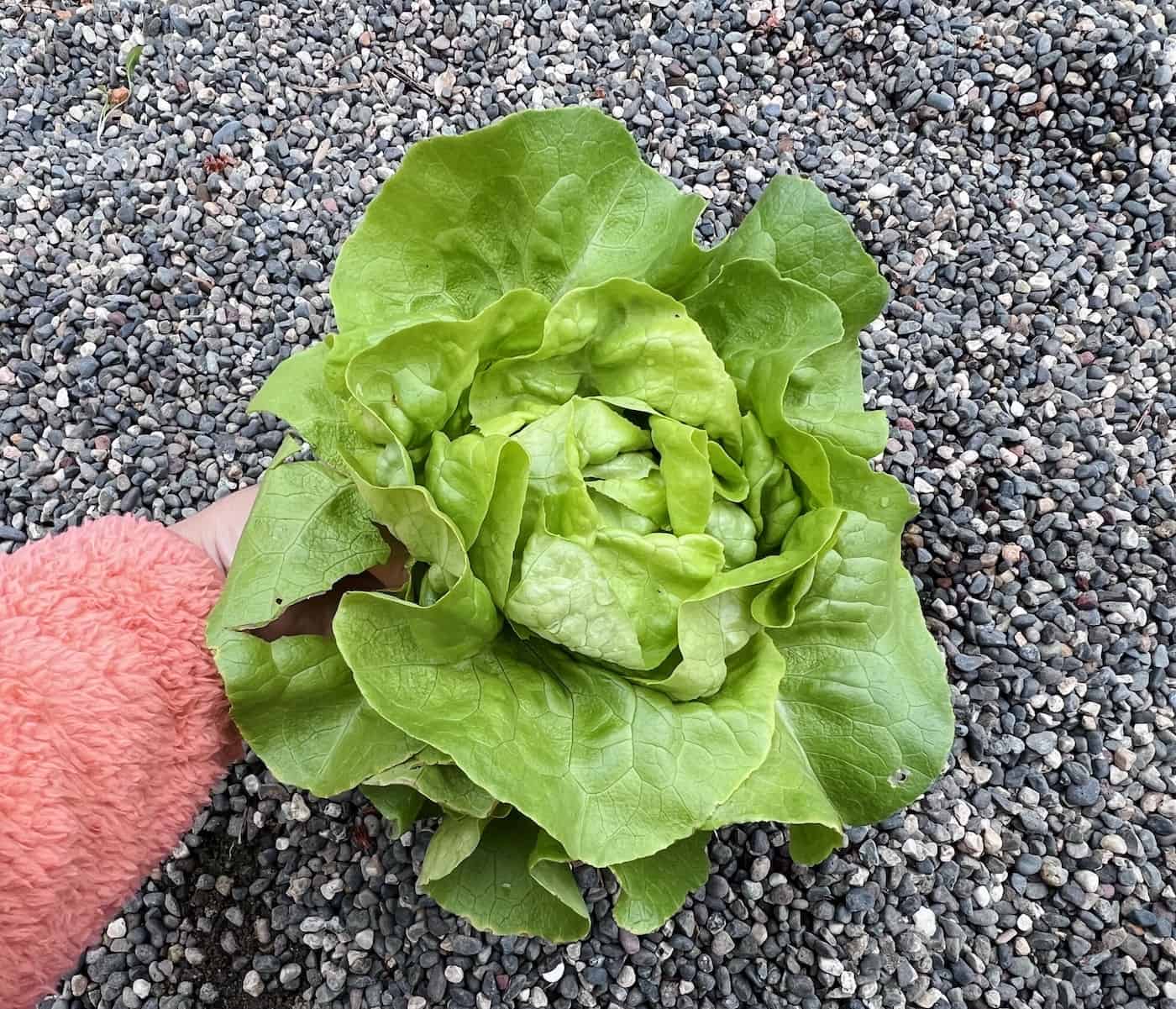
FAQs about Butter King lettuce
What is all-year-round butterhead lettuce?
All-year-round butterhead lettuce refers to varieties of butterhead lettuce that can be grown and harvested throughout the entire year. These types are known for their adaptability to various growing conditions, making them suitable for continuous planting and harvesting in different seasons. Some popular all-year-round butterhead lettuce varieties include Buttercrunch and Butter King.
How long does it take Butter King lettuce to mature?
Butter King Lettuce typically takes around 55-75 days from sowing seeds until harvest time, depending on factors such as temperature, sunlight exposure, soil quality, watering practices, and fertilization schedules.
Before you go…
Butter King lettuce is one of the best gourmet butterheads to try growing at home. Proper soil preparation, watering techniques, companion planting strategies, and pest management practices will ensure a bountiful harvest of fresh lettuce leaves.


